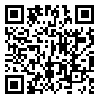BibTeX | RIS | EndNote | Medlars | ProCite | Reference Manager | RefWorks
Send citation to:
URL: http://ijn.iums.ac.ir/article-1-728-en.html
Background and Aim: Cancer produces many problems in all dimensions of human life. and cause increased supportive needs patients. Dramatic increase in the number of cancer patients, different treatments and health care costs highlights the need for a better social setting towards a healthy life. Present study determines the correlation between perceived social support from different and supportive sources and size social network with quality of life in cancer patients
Material and Method: A descriptive correlational design was used for this study. Using continuous sampling 220 patients from Firoozgar, Hazrat-e-Rasool hospitals and Emam Khomeini (rah) Cancer Institute recruited for participation in the study. They were asked to respond to Nortouse Social Support (SSQ) and the Ferrans and Powers Quality of Life Index- cancer version (QLI-CV) questionnaires. The computer software SPSS 13 was used for data analysis. Descriptive statistics, chi-square tests, spearman correlation and multiple linear regression tests were used.
Results: Findings showed that more than half of the patients (56.4%) had experienced a moderately good quality of life, and most of them perceived moderate social support from their middle-sized social networks. A statistically significant positive correlation was found between quality of life and perceived social support (rs=0.415, P=0.00), particularly support from spouses and family members. Also, there was statistically significant positive correlation between quality of life and size of social network (rs=0.245, P=0.00). Multiple linear regression test showed that 31.6% of variation in the quality of life was related to perceived social support, type of treatment and economic status.
Conclusion: Oncology nurses are recommended to apply the finding for enhancing the social networks of cancer patients and give them suitable support. Study results demonstrated that perceived social support, type of treatment and economic status accounted for 31/6% of variations of quality of life and a large amount of variance remains unexplained, so further researches is needed.
Received: 2010/03/8 | Accepted: 2014/01/5 | Published: 2014/01/5
| Rights and permissions | |
 |
This work is licensed under a Creative Commons Attribution-NonCommercial 4.0 International License. |




